Context
Generalist physiotherapists working in remote areas face the daunting task of providing physiotherapy care to all populations in their defined geographic area. In many cases, remote physiotherapists must also simultaneously manage clients living in several communities. If a region is underserved and maintains waitlists for service, remote physiotherapists are charged with the additional time-consuming challenge of prioritizing referrals across many client types and varied practice areas.
Nunavut and the Baffin Region
Located in the Eastern Canadian Arctic and covering an area of almost 2 million km2, Nunavut is Canada's largest and most sparsely populated territory (Fig1). Nunavut's residents are dispersed over small hamlets and towns, all of which are commonly accessed only by air travel. Approximately 85% of residents self-identify as Inuit1. Although life in Nunavut has changed greatly in the past few decades, most residents still practice traditional Inuit cultural activities, such as subsistence hunting, fishing, animal skin preparation, and speaking Inuktitut, the indigenous Inuit language (Fig2).
For the administration of government services, including health care, the territory is divided into three regions. The Baffin Region is Nunavut's largest and most populated region, and contains the territorial capital, Iqaluit. Geographically, it is Nunavut's most easterly region. For the administration of health services, the Baffin Region consists of approximately 16 000 people living in 12 communities2.
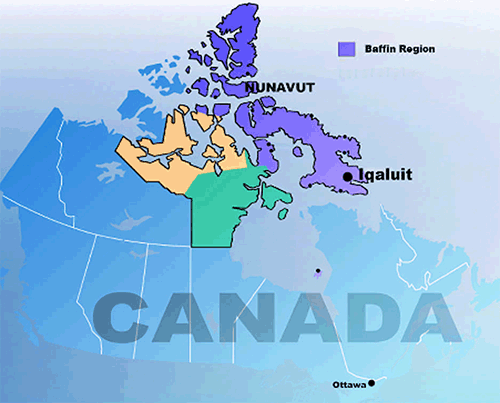
Figure 1: Map of Canada outlining Nunavut and the Baffin Region.

Figure 2: Sustainable harvesting is an important cultural activity and source of food, clothing and income in Nunavut.
Physiotherapy service in the Baffin Region
Generalist service: Baffin Region physiotherapy services are based out of the territorial capital, Iqaluit. However, physiotherapists are responsible for providing care to clients in 12 of the region's communities. The physiotherapists provide a generalist service: treating clients from across the lifespan and from a wide range of practice areas. Physiotherapists are required to be multiskilled and capable of simultaneously managing diverse caseloads for clients in multiple communities.
Service to remote communities: Historically, clients from communities outside of the capital city (the 'remote communities') received physiotherapy service in two ways: as an add-on appointment during client travel to Iqaluit for medical or other purposes, or during the physiotherapist's annual visit to the remote communities (Fig3). Ideally, physiotherapists travel once yearly to all 11 remote communities in the Baffin Region; however, staff shortages, staff turnover, and climate limitations do not guarantee this will be consistent. Physiotherapy community visits range in duration from 2 to 10 days, and once on-site, a temporary clinic is established at the local community health centres. Delivering physiotherapy services in community health centres presents the additional challenges of limited treatment space, sharing treatment space with other disciplines, and limited interpretation and administrative support (Fig4). Prior to 2006 videoconferencing was used as an occasional supplement to augment physiotherapy services to clients in the remote communities (Telehealth videoconferencing is available in all of Nunavut's communities).

Figure 3: Pond Inlet, a remote community in the Baffin Region of Nunavut.
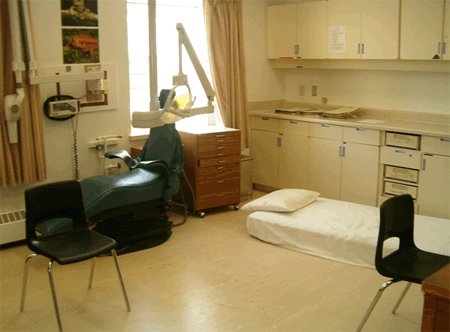
Figure 4: Physiotherapy treatment space in a community health centre in Nunavut (shared with dental office).
An under-serviced area: Physiotherapy practice in the Baffin Region is characterized by high demand for service and low health/human resources. In general, physiotherapy in the region is under-serviced compared with southern Canada. The number of physiotherapists employed fluctuates from sole charge to three staff. Although disability rates among Inuit have been reported at nearly twice the national average, the number of physiotherapists per capita in the Baffin Region is approximately half that of Canadian national averages3, even at maximum capacity. Fluctuating staff levels and high staff turnover are common. More referrals are received than can be assessed, leading to long waitlists.
Issue
The problem
With no standardized system for managing the increasingly long physiotherapy waitlist from all 12 communities in the Baffin Region, a growing sense of concern was developing among the two regional physiotherapists. The physiotherapists were dissatisfied with inequity in service delivery among the communities, and among client types. It was perceived that clients from the capital city (Iqaluit) were receiving a disproportionate amount of physiotherapy service, and that clients with less urgent needs were being treated before clients with greater needs for intervention. As a result, the physiotherapists experienced progressively greater work stress, job dissatisfaction, and worked longer hours, risking employee burnout. In response to this situation, the physiotherapists developed, implemented and evaluated a prioritization tool for the delivery of physiotherapy services in the Baffin Region of Nunavut, Canada.
Project purpose
The purpose of this project was to develop a tool to:
- prioritize physiotherapy referrals based on urgency and need, regardless of client location or community
- deliver equitable physiotherapy services throughout the Baffin Region of Nunavut, Canada
- ensure consistency of care despite frequent staff turnover and fluctuating staffing numbers
- provide caseload management guidelines for physiotherapists working in rural and/or under-serviced areas.
This project was a clinician-driven initiative, undertaken to fill a caseload management gap that was resulting in perceived inequities in service delivery across the region and workplace stress for the physiotherapist authors.
Ethics
This project was part of an internal quality management process to improve referral management and equity of physiotherapy services in the Baffin Region of Nunavut. Permission from management was granted to complete this project. No formal ethics approval was required for this project under the Government of Canada's Panel on Research Ethics: the project was a quality improvement initiative; interviewees provided information pertaining only to organizational policies and procedures, and were not themselves the focus of the project. Finally, the evaluation of physiotherapy caseloads examined only referral prioritization groups and did not involve identifying client information4.
Overview of methods
The physiotherapy prioritization tool was developed by combining background research with the authors' first-hand knowledge of the specific characteristics of the Baffin Region. A draft of the tool was created, then revised following consultation with management. The tool was evaluated following a four-month pilot implementation period (Fig5)5.
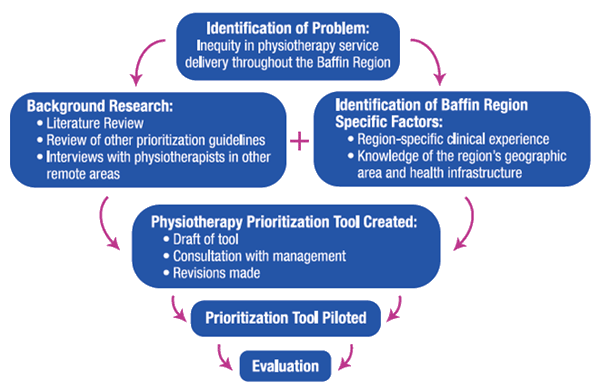
Figure 5: Steps taken in the development of the Baffin Region Physiotherapy Prioritization Tool5.
Background research
Three methods were used to collect background information to inform the development of the tool: (i) a review of the literature; (ii) interviews with physiotherapists working in other remote areas of Canada, and (iii) a review of other physiotherapy prioritization guidelines and policies in Canada.
Literature review: A search of the literature for articles pertaining to physiotherapy prioritization guidelines across multiple caseloads was conducted using the electronic databases MEDLINE and CINAHL. The following keywords were combined as follows during the search: physiotherapy AND (medically underserved area OR rural health services) AND (case management OR triage).
Findings of the literature review The search as entered above yielded zero citations from the searched databases.
Interviews: The authors conducted four semi-structured interviews with physiotherapist informants practicing in other rural and remote areas of Canada. The purpose of the interviews was to explore any existing physiotherapy prioritization systems currently ongoing in other Canadian jurisdictions.
Informant selection Physiotherapists in the following Canadian towns were recruited to participate in the interviews based on the similarities of their practice contexts to the Baffin Region of Nunavut:
- Sioux Lookout, northern Ontario
- Yellowknife, Northwest Territories
- Chisasibi, Nunavik, northern Quebec
- Happy Valley/Goose Bay, Labrador, Newfoundland and Labrador.
Physiotherapists working in the above-noted regions all provide outreach physiotherapy service across remote, geographically large areas, encompassing many smaller communities. All provide a generalist physiotherapy service to a range of client types and ages.
Contact phone numbers for each physiotherapy department were found through department websites, and each informant was contacted via telephone to request interview participation. All informants consented to providing information about any physiotherapy prioritization systems in use at their workplaces for the purposes of the development of a prioritization tool and resulting publications pertaining to the project.
Interview content The interviews were structured in two sections. The first group of questions was designed to confirm that the informant's practice context was comparable with the Baffin Region of Nunavut. Sample questions included:
- What is the population of your catchment area?
- To how many remote communities do you provide physiotherapy service?
- How many physiotherapists provide service in your area?
- How often do you travel to each remote community?
- What are the client populations served by the physiotherapists in your area?
- Do you maintain waitlists for physiotherapy service?
The second group of questions was more open-ended and exploratory. The authors were seeking information regarding any formal or informal prioritization methods used to manage diverse caseloads. Example questions included:
- How do you prioritize incoming physiotherapy referrals?
- Do you have an official policy or guidelines that directs the prioritization of physiotherapy referrals?
- Who prioritizes physiotherapy referrals?
- What criteria are used to determine if a referral is 'high priority' or 'urgent'?
- What is the rationale or reasoning for the order of the priority groups in any system that you use?
Interview results The informants worked in practice contexts that were comparable to the Baffin Region of Nunavut: all worked in remote areas, catchment areas consisted of 9000-20 000 people living in multiple communities (9-28 communities), the informants worked on small teams ranging from 2-6 physiotherapists, and all provided regular community outreach visits. All informants provided a generalist physiotherapy service across multiple client populations, and all maintained waitlists for physiotherapy service.
One physiotherapist reported that an official policy to direct prioritization of referrals existed in the region. The other three physiotherapists reported that unofficial guidelines and physiotherapist discretion were used to prioritize referrals (these policy and workplace guidelines were included in the review of workplace prioritization guidelines, below). Informants identified various client groups and specific characteristics that result in prioritizing referrals as 'urgent'.
Analysis of interviews The authors listed all the client groups reported by informants in classifying referrals as high priority or urgent, then identified the rationale behind considering each group as urgent. This process generated a list of five common factors for categorizing referrals as high priority:
- Discharge planning from hospital
- Client safety at risk
- Clients with a time-limited window of opportunity for successful therapeutic intervention
- Clients whose function is significantly impacted by their condition
- Clients who are likely to experience an improvement in status as a direct result of physiotherapy intervention.
Review of workplace prioritization guidelines: The authors also searched for formal workplace policies and informal workplace guidelines regarding the prioritization of physiotherapy referrals from other areas of Canada. The search was conducted via word-of-mouth and by reviewing abstracts from Canadian Physiotherapy Association Congresses.
Findings of the review of workplace prioritization guidelines Six physiotherapy prioritization guidelines and policies from areas across Canada were reviewed6-11. Most of the physiotherapy prioritization systems that were reviewed are intended for one specific client population or for one particular practice setting (ie acute-care hospital setting). None matched the specific context or client mix of the Baffin region. However, common characteristics in prioritizing new physiotherapy referrals as 'urgent' were identified. These matched the characteristics identified by the physiotherapist informants during interviews.
Identification of characteristics specific to the Baffin Region
In developing the prioritization tool, the authors identified a number of characteristics specific to the Baffin Region that would influence the order of the prioritization categories:
- the vast geography of the Baffin Region (approximately 2 million km2)
- air-only access to communities
- health infrastructure: community health centres and telehealth videoconferencing equipment in each community
- low levels of health human resources, for physiotherapy and other health disciplines
- high staff turnover, for physiotherapy and other health disciplines
- infrequent outreach visits to the remote communities.
Creation of the Baffin Region Physiotherapy Prioritization Tool
The authors undertook the following 4 steps in creating the prioritization tool. First, the main client groups treated by physiotherapy services in the Baffin Region were identified (in no particular order): clients with urgent orthopaedic conditions, clients with non-urgent orthopaedic conditions, hospital inpatients, adults with disabilities and chronic conditions, children with disabilities and chronic conditions, clients receiving home care services, and clients at risk for falls.
Second, the client groups were placed in priority order based on the characteristics influencing physiotherapy referrals as high priority identified during the background research. The identified characteristics specific to the Baffin Region also influenced the ordering of the client groups. For example, hospital inpatients and clients at risk for falls were deemed high priority due to client safety being further jeopardized. Children with disabilities and clients with urgent orthopaedic conditions (eg post-surgery, post-fracture complications) were categorized in higher priority groups due to the time-limited window for therapeutic intervention, after which the client may be at risk for long-term delays in gross motor development, contractures, or loss of function.
These are the Baffin Region Physiotherapy Prioritization Tool Categories in priority order:
- Hospital inpatients
- Paediatric clients with chronic conditions and disabilities
- Clients at risk for falls
- Clients with urgent orthopaedic conditions
- Adult clients with chronic conditions and disabilities
- Clients followed by home care - non-urgent issues
- Adult clients with non-urgent orthopaedic conditions.
Third, for 4 months, the authors used the first draft of the tool to prioritize the same referrals simultaneously in order to verify inter-rater reliability. Discrepancies in prioritization of referrals were used as opportunities to refine and clarify descriptions of the prioritization categories. Consultation with management was sought, and prompted further revisions to the prioritization tool to improve the tool's clarity and ease of use. Information was added to the draft tool to describe the characteristics of each client group, and a brief rationale for the ordering of each prioritization group. The resulting Baffin Region Physiotherapy Prioritization Tool is presented (Table 1)5. Using this final draft of the tool, the authors could independently prioritize referrals into the same categories without disagreement on a consistent basis.
Fourth, the subsequent 4 months represented the pilot or 'implementation period', during which the tool was used independently by both physiotherapist authors. Following the pilot implementation period, the impact of the tool on the composition of the physiotherapy caseloads was evaluated.
Table 1: Baffin Region Physiotherapy Prioritization Tool5
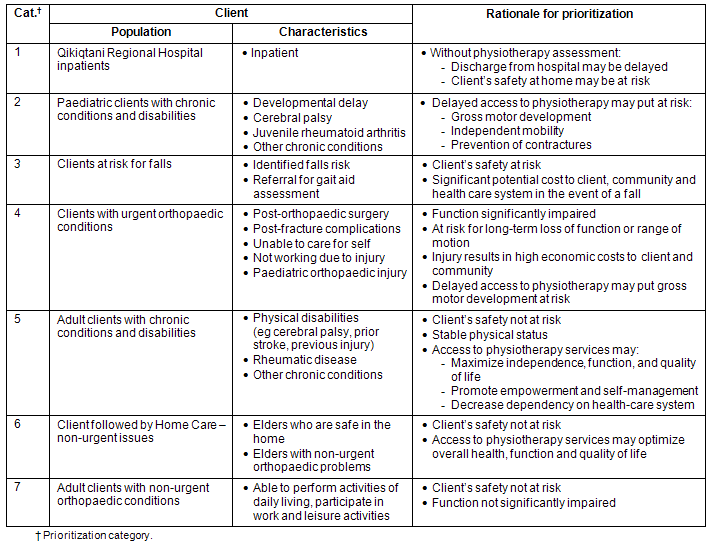
Lessons learned
Evaluation of the Baffin Region Physiotherapy Prioritization Tool
Evaluation goals: The tool was evaluated to determine if its use improved the equity with which physiotherapy referrals are assessed in the Baffin region. Specifically, the authors sought to determine if using the tool improved delivery of physiotherapy service:
- based on urgency and need
- equitably between communities throughout the region (Fig6)5.
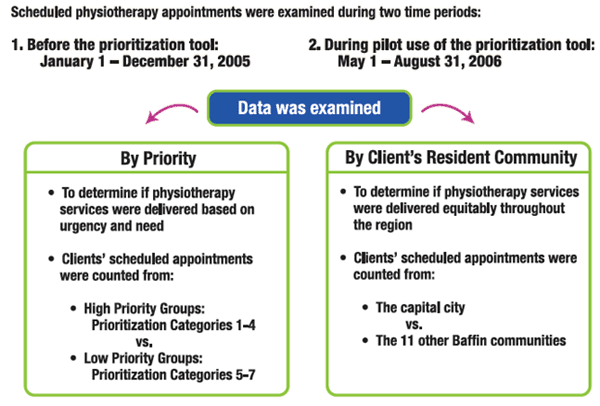
Figure 6: Evaluation of the Baffin Region Physiotherapy Prioritization Tool5.
Evaluation periods: The prioritization tool was evaluated over a period of 4 months (the pilot or 'implementation period'). The caseloads of the two permanent physiotherapists were retrospectively examined during the pilot implementation period, and during a 12 month comparison period prior to implementation of the tool. It should be noted that an interim four-month phase involved revisions to the tool, and thus was not included in the evaluation.
Evaluating service delivery based on urgency and need: The tool's effectiveness in increasing the proportion of physiotherapy service delivered to high-needs clients was evaluated. High-priority clients were defined as prioritization categories 1-4. The physiotherapists' caseloads were examined by comparing the number of clients from high priority groups with the number of clients from low priority groups during the pilot implementation and the comparison period.
Evaluating equity of service between communities: The tool's effectiveness in increasing the proportion of physiotherapy service delivered to the remote communities was also examined. Scheduled physiotherapy appointments were counted from the capital city, Iqaluit (population 6600), and compared with the number of appointments for clients from the 11 remote communities (combined population of 9400)2 during the pilot implementation period and the comparison period.
Results: Implementation of the Baffin Region Physiotherapy Prioritization Tool
Quantitative results: Both 'service based on urgency' and 'equity between communities' are reported on, as well as physiotherapists' reflections, among others.
Service based on urgency Prior to implementing the prioritization tool, the majority of physiotherapists' caseloads were filled by clients from low priority groups (52% of appointments), while the remaining 48% of physiotherapy appointments were filled by clients from high priority groups. After implementing the tool, 86% of physiotherapy appointments were filled by clients from high priority groups, and clients from lower priority groups comprised the remaining 14% of total appointments (Fig7)5.
Equity between communities Before implementation of the physiotherapy prioritization tool, physiotherapists' caseloads consisted mainly of clients from the capital city - 63% of scheduled appointments were for Iqaluit residents, while the remaining 37% were for clients from the remote communities. After the prioritization tool was implemented, the percentage of physiotherapy appointments for clients from remote communities rose to 58%, which is representative of the region's overall population (Fig8)5.
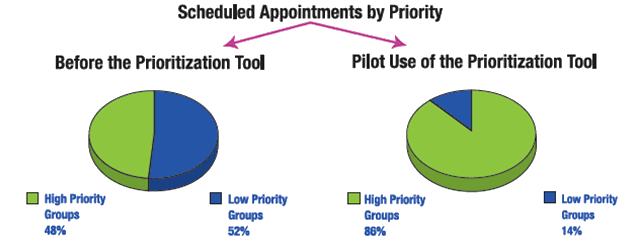
Figure 7: Proportion of scheduled appointments by prioritization category, comparison period and pilot implementation period5.

Figure 8: Proportion of scheduled appointments by client's community, comparison period and pilot implementation period5.
Physiotherapists' reported reflections: Following the implementation period of the physiotherapy prioritization tool, physiotherapists subjectively noted increased job satisfaction. They perceived that physiotherapy services were being delivered more equitably across the Baffin Region. The physiotherapists observed that the majority of clinical time was spent on clients with higher needs for service. They also subjectively identified that clients from the remote communities received a more equitable amount of service compared with prior to using the tool. The physiotherapists noted that having a standardized method of prioritizing referrals led to decreased job stress and less time spent triaging referrals.
Other outcomes: The implementation of the Baffin Region Physiotherapy Prioritization Tool resulted in two main unanticipated outcomes: (i) improved communication with other health professionals, and (ii) changes in physiotherapy service delivery methods in the Baffin Region.
Improved communication with other health professionals Early in the development of the prioritization tool, a new physiotherapy referral form was developed to capture all the information required to prioritize referrals accurately. During the distribution of the new referral form, physiotherapists promoted the new prioritization system to other health professionals. As a result, the other professionals better understood the physiotherapy services provided, and the physiotherapists were able to gain more detailed information about referred clients. Following implementation of the prioritization tool, physiotherapists were also able to objectively justify variations in wait times for different types of clients.
Changes in service delivery Implementation of the prioritization tool provoked an examination of and change in physiotherapy service delivery in the Baffin Region. As the distribution of services shifted from the capital city to the remote communities, physiotherapists were challenged to find methods to assess and treat urgent clients from the remote communities in priority order. Historically, all clients from the remote communities were treated during the once yearly physiotherapy community visits, or during client travel to the capital city for other reasons. This resulted in very long wait times for clients living in the remote communities, even for those with an urgent need for physiotherapy.
Implementation of the Baffin Region Physiotherapy Prioritization Tool resulted in three main changes in service delivery, increased: (i) client travel to the capital city; (ii) use of videoconferencing; and (iii) use of a consultative model.
Increased client travel to the capital city For urgent clients from the remote communities, physiotherapists began booking assessment appointments in the capital city more frequently following implementation of the prioritization tool. This resulted in increased client travel to the capital city. Such out-of-town appointments were booked only following a screening and consent appointment via videoconferencing, and for those clients for whom:
- safety was at risk
- there was a time-limited window of opportunity for successful therapeutic intervention
- function was significantly impacted by their condition.
Increased use of videoconferencing In order to adequately follow clients from the remote communities, physiotherapists increased the use of videoconferencing for follow-up appointments. Each community health centre in Nunavut houses Telehealth videoconferencing equipment. Videoconferencing was used for screening and follow-up appointments.
Increased use of a consultative model Prior to implementation of the Prioritization Tool, the majority of physiotherapy service delivered in the Baffin Region was via a 'hands-on treatment' model (client assessed, seen in the rehabilitation centre multiple times a week for a number of weeks, then discharged). As the proportion of physiotherapy services changed from Iqaluit-focused to remote community-focused, so did the physiotherapy service delivery model. For certain client populations where appropriate, physiotherapists now use a modified consultative model more often: clients are assessed, then provided with a home program and education. Follow-up appointments are provided as required in order to ensure comprehension, proper technique, and adherence to programs.
Discussion
Physiotherapists working in remote, under-serviced regions require an effective way to prioritize client referrals from multiple caseloads. In jurisdictions in which there are insufficient numbers of physiotherapists to meet the needs of the population, a prioritization tool can help ensure that clients with the most urgent needs for physiotherapy service are assessed and treated before clients with less urgent needs. This leads to a more equitable delivery of physiotherapy services across a given region. Using a prioritization tool can also decrease the amount of time that clinicians working in remote areas spend managing diverse caseloads, and decrease the resulting work-related anxiety if physiotherapists perceive that inequities exist among client groups. Clear, standardized guidelines are particularly important in jurisdictions of high staff turnover, so that service distribution is maintained even as individual physiotherapists come and go.
The Baffin Region Physiotherapy Prioritization Tool provided physiotherapists with a structured, objective method of grouping clients in the region based on their need for service, regardless of their community of residence. Following implementation of the tool, clients from high prioritization categories received a greater proportion of physiotherapy services. The delivery of physiotherapy services shifted from being Iqaluit-centred, to a broader regional service in which clients in remote communities receive a proportion of service representative of the overall population.
Applicability to other jurisdictions: Although the Baffin Region Physiotherapy Prioritization Tool was created specifically to meet the needs of the client populations seen by physiotherapy in the Baffin Region of Nunavut, the tool could be adapted for use in any under-serviced remote jurisdiction. The tool could be modified to provide caseload management guidelines for physiotherapists working in remote, under-serviced areas, where the demand for service is higher than available staff resources.
While the prioritization tool provides a standardized framework for managing caseloads that exceed clinicians' available time, it should not be used as a justification to reduce staffing levels, nor should the tool be used as a rationale to maintain inadequate numbers of physiotherapists to meet the needs of a given area. Rather, it is meant to provide an objective method of prioritizing physiotherapy referrals when demand outpaces available service.
Limitations of project: The development of the Baffin Region Physiotherapy Prioritization Tool was a clinician-driven project which aimed to improve internal administration of referral management procedures in order to improve service delivery. The physiotherapist authors of this project developed, implemented, and evaluated the tool, resulting in a potential for bias. The authors made every effort to seek solutions as objectively.
The changes in physiotherapy service delivery methods that were applied following implementation of the prioritization tool have not been evaluated for efficacy, and may not be applicable in all jurisdictions. The use of videoconferencing as a medium for physiotherapy appointments has not been fully studied, and requires further research to confirm that it is an effective method for delivering follow-up physiotherapy appointments in a cross-cultural setting. Similarly, delivering physiotherapy services using the modified consultative model should be fully analyzed for efficacy in the remote context of the Baffin Region.
Recommendations for future work: In the future, the Baffin Region Physiotherapy Prioritization Tool could be trialed in the other two regions of Nunavut. Feedback from physiotherapists and managers in those regions could be solicited and incorporated, and an official territory-wide policy could be developed. As outlined above, an evaluation of the new service delivery models used in the Baffin Region should be conducted to ensure that these methods represent best practices in this remote setting.
Conclusion
The Baffin Region of Nunavut comprises approximately 16 000 people dispersed over 12 communities, most of whom self-identify as Inuit. Despite challenges in geography, budget, and low staffing, implementing the Baffin Region Physiotherapy Prioritization Tool improved the equity in physiotherapy service delivery in the Baffin Region of Nunavut. Physiotherapy referrals are now prioritized based on urgency and need, regardless of the client's community of residence. Urgent referrals now receive comparatively more service, and the physiotherapy service is more equitably distributed over all of the region's communities. The prioritization tool provides and objective method for making triage decisions, which has led to a reported decrease in physiotherapist job stress. Based on the lack of information yielded by the literature search, the vague guidelines in similar practice settings obtained by the semi-structured interviews, and the numerous correspondence received by the authors since presenting the results of this project5, it appears that there is a need for clearer administrative tools when physiotherapy practice is expanded beyond one client type. This Baffin Region Physiotherapy Prioritization Tool can be adapted by other physiotherapists working with multiple client populations in rural, remote or under-serviced areas.
Acknowledgments
The authors thank the following individuals who contributed to the success of this project: Jill Robison, Cathy McNeil, Shannon Morrison, Gogi Greeley, Nicole Terrier, Gail Kuo, Kathryn Gasparelli, Mylène Haché, and Karen Liddiard.
References
1. Statistics Canada. Population by selected ethnic origins, by province and territory (2006 Census) (Nunavut). (Online) 2006. Available: http://www40.statcan.gc.ca/l01/cst01/demo26n-eng.htm (Accessed 5 December 2009).
2. Nunavut Bureau of Statistics. Nunavut Census population by region and community and Inuit identity, 1996 to 2008, as of July 1. (Online) 2006. Available: http://www.gov.nu.ca/eia/stats/census.html (Accessed 24 May 2010).
3. Rokosh C. Nunavut rehabilitation needs assessment and framework for service delivery. Nunavut: Government of Nunavut, 2002.
4. Government of Canada Panel on Research Ethics. Draft 2nd Edition of the Tri-Council Policy Statement: Ethical Conduct for Research Involving Humans (TCPS) (December 2008). (Online) 2008. Available: http://pre.ethics.gc.ca/eng/policy-politique/initiatives/draft-preliminaire/chapter2-chapitre2/#toc02-3 (Accessed 5 May 2010).
5. Mifflin TM, Bzdell M. Development of a client prioritization tool for physiotherapy in a remote, under-serviced area: a pilot project in the Canadian arctic. In: Proceedings, World Confederation for Physical Therapy 15th International Congress; 2-6 June 2007; Vancouver, BC, 2007.
6. O'Callaghan L. Innovation in enhancing physiotherapy practice. In: Proceedings, Canadian Physiotherapy Association Congress 2006; 29 June-2 July 2006; Saint John, NB, 2006.
7. Capital Health Physiotherapy Departments. Improving access: an outpatient physiotherapy prioritization system. In: Proceedings, Canadian Physiotherapy Association; 29 June-2 July 2006; Saint John, NB, 2006.
8. Hache M. Physiotherapy service helpful reminder. Chisasibi, Quebec: Cree Board of Health and Social Services of James Bay, 2006.
9. Government of New Brunswick. New Brunswick extra-mural program physiotherapy preferred practice. Fredericton, New Brunswick: Government of New Brunswick, 2004.
10. Stanton Regional Hospital. Rehabilitation department referral for occupational therapy/ physiotherapy. Yellowknife, Northwest Territories: Stanton Regional Hospital (accessed 2006).
11. Sioux Lookout Meno Ya Win Health Centre. Health services division policy and procedure manual, waiting list/priorititizing. Sioux Lookout, Ontario: Sioux Lookout Meno Ya Win Health Centre, 2006.

